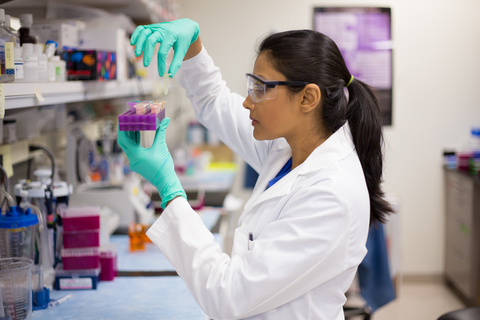Scientists may have found “the trigger” that leads to extremely rare blood clots after the Oxford-AstraZeneca Covid vaccine

An international team of scientists believe they may have found a molecular mechanism behind the extremely rare blood clots linked to adenovirus Covid-19 vaccines.
Cardiff University reports their scientists, and colleagues from Arizona State University, worked with AstraZeneca to investigate vaccine induced immune thrombotic thrombocytopenia (VITT), also known as thrombosis with thrombocytopenia syndrome (TTS), a life threatening condition seen in a very small number of people after receiving the Oxford-AstraZeneca or Johnson & Johnson vaccines.
The global team used state of the art technology to analyse the AstraZeneca vaccine in minute detail to understand whether the ultra rare side effect could be linked to the viral vector.
Their findings suggest it is the viral vector, in this case an adenovirus used to shuttle the coronavirus’ genetic material into cells, and the way it binds to platelet factor 4 (PF4) once injected that could be the potential mechanism.
In very rare cases, the scientists suggest, the viral vector may enter the bloodstream and bind to PF4, where the immune system then views this complex as foreign. They believe this misplaced immunity could result in the release of antibodies against PF4, which bind to and activate platelets, causing them to cluster together and triggering blood clots in a very small number of people after the vaccine is administered.
Their findings are published today in Science Advances.
Professor Alan Parker, an expert in the use of adenoviruses for medical applications from Cardiff University’s School of Medicine, said “VITT only happens in extremely rare cases because a chain of complex events needs to take place to trigger this ultra-rare side effect. Our data confirms PF4 can bind to adenoviruses, an important step in unravelling the mechanism underlying VITT.
“Although very rare, it is critical we fully investigate vector-host interactions of the vaccine at a mechanistic level to help us understand both how the vaccine generates immunity – and how it may lead to any rare adverse events, such as VITT. Establishing a mechanism could help to prevent and treat this disorder.
“We hope our findings can be used to better understand the rare side effects of these new vaccines – and potentially to design new and improved vaccines to turn the tide on this global pandemic.”
Both the AstraZeneca and Johnson & Johnson vaccines use an adenovirus to carry spike proteins from the coronavirus into people to trigger a protective immune response.
When both vaccines showed the ultra rare side effect of VITT, scientists wondered whether the viral vector had some part to play. Another important clue was that neither the Moderna or Pfizer vaccines, made from an entirely different technology called mRNA vaccines, showed this effect.
The team used a technology called CryoEM to flash freeze preparations of ChAdOx1, the adenovirus used in the AstraZeneca vaccine and bombard them with electrons to produce microscopic images of the vaccine components.
They were then able to look in atomic level at the structure of the outer protein cage of the virus, the viral capsid, and other critical proteins that allow entry of the virus into the cell.
In particular, the team detail the structure and receptor of ChAdOx1, which is adapted from chimpanzee adenovirus Y25, and how it interacts with PF4. They believe it is this specific interaction, and how it is then presented to the immune system, that could prompt the body’s own defences to view it as foreign and release of antibodies against this self-protein.
The research team used computational models, which the Singharoy group at ASU specialise in, to show that one of the ways the two molecules tightly bind is via electrostatic interactions.
First author on the study Dr Alexander Baker, an Honorary Research Fellow at Cardiff University, said “We found that ChAdOx1 has a strong negative charge. This means the viral vector can act like a magnet and attract proteins with the opposite, positive charge, like PF4.
“We then found that PF4 is just the right size and shape that when it gets close to ChAdOx1 it could bind in between the negatively charged parts of ChAdOx1’s surface, called hexons.”
The research team are hopeful that armed with a better understanding of what may be causing rare VITT they can provide further insights into how vaccines and other therapies, which rely on the same technology, might be altered in the development of the next generation vaccines and therapies.
Alexander Baker said “With a better understanding of the mechanism by which PF4 and adenoviruses interact there is an opportunity to engineer the capsid, or outer shell of the vaccine, to prevent this interaction occurring. Modifying ChAdOx1 to reduce electronegativity may reduce the chance of causing thrombosis with thrombocytopenia syndrome.”
The Medicines and Healthcare products Regulatory Agency (MHRA) continues to advise that vaccination is the best way to protect people from Covid-19 and the benefits far outweigh the risk of any known side effects.
The MHRA advises that anyone experiencing symptoms, including a severe headache that is not relieved by painkillers, shortness of breath, chest/abdominal pain or blurred vision after vaccination should seek medical advice urgently.








